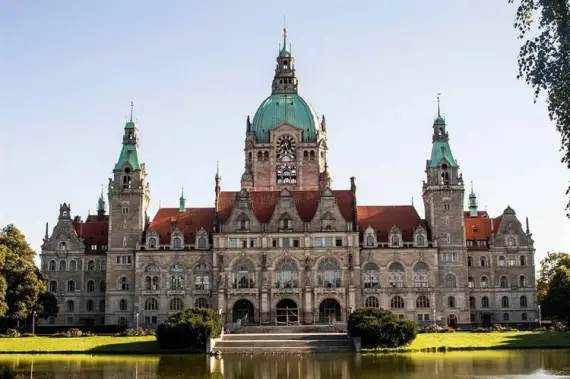Hannover - Buses and Buses - Transportation - Attractions and Sightseeing
HANNOVER

Located in Lower Saxony, Hannover is a German city of more than half a million people. The Leine River flows through it. The first mention of a settlement there dates back to 1022. In 1241 Hannover was granted a city charter, and with the 14th century it was surrounded by city walls. It is a Hanseatic city, known for its gardens, university, metal industry and trade fairs.
Hannover - attractions and sights to see
Hannover is famous as the greenest city in Germany. However, it also has some interesting sights and places worth seeing.
Old Town in Hannover
Most of the city's old buildings did not survive the bombing of World War II. However, dozens of historic half-timbered houses have survived in various parts of the city, and it was decided to relocate them to the area around the Old Town Hall and the Marktkirche church, creating an Old Town district there. Hanover City Hall was built in the 15th century in the North German Brick Gothic style and has been expanded several times over the years.
A little farther away, surrounded by the picturesque Masch Park, is the New Town Hall, dating back to the early 20th century and featuring a distinctive high dome from which one can enjoy a panoramic view of the city. Access to it is provided by a curved elevator that ascends 17 degrees in the higher parts.
Marktkirche Church
This church dedicated to Saints George and James was built around 1320. It represents the Gothic style, although its current appearance is the result of post-war reconstruction. The church has a tower of 98 meters, in which 11 bells hang.
Sprengel Museum
This museum exhibits 20th and 21st century art, especially German Expressionism and French Modernism. Its collection includes works by artists such as Pablo Picasso, Fernand Léger, Paul Klee and Max Ernst.
Leine Palace
This castle was built in the 17th century on the site of a Franciscan monastery that previously existed here as the seat of the princes and electors of Hanover. Today it is the seat of the Lower Saxony parliament. The palace has been rebuilt several times over the years, and was completely destroyed during World War II. The current appearance is a mixture of Baroque and Classical styles.
Leibniz House
This small museum is dedicated to the famous mathematician and philosopher associated with Hanover, Gottfried Wilhelm Leibniz. It is housed in a Renaissance house from 1499, where the great scientist lived from 1698 to 1716. One of the rooms houses a replica of his calculating machine.
Beginek Tower
This 24-meter tower is a remnant of the former city walls. It dates back to the 14th century. Its name has to do with the Begins, a secular congregation of women whose home was once located near the tower. A viewing platform was built on the 14th meter.
Ruins of the Aegidienkirche in Hannover
The church was built in the 14th century, but was destroyed during wartime bombings. It has not been rebuilt since, becoming a kind of memorial to the sacrifices and destruction wrought by war.
Royal Gardens (Herrenhäusen Gärten)
These gardens stretch over an area of as much as 136 hectares and are one of the most beautiful green spaces in Europe. They were created in the 17th century and have been preserved in virtually unchanged form since then. They consist of four different themed gardens: the sprawling baroque Grosser Garten with its 17th-century palace, numerous fountains, sculptures, labyrinths and viewpoints, the English Georgengarten, the mountainous Berggarten showcasing vegetation from different climate zones, and the Welfengarten now belonging to the University of Hanover.
HANNOVER - list of coach stops:
- ZOB - Rundestrasse 12
SINDBAD coach stop:
HANNOVER - list of international connections:
© 2025 Sindbad
Technical support, assistance, payments: Sindbad IT
© 2025 Sindbad
Technical support, assistance, payments: Sindbad IT
